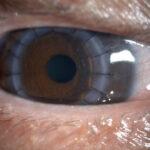Low vision aids are designed to improve visual performance and provide enrichment of daily experiences. Low vision aids can be optical, non-optical and electronic devices.
Distance Optical Aids:
When conventional lenses cannot provide required visual range, aids that have optical properties will be capable of promoting better visual performance. Telescope is an optical instrument that improves the resolution of an object by increasing the size of the image projected on the retina by making things at distance appear to be closer. The use of telescopes can help individuals in their daily and social activities such as watching television, reading white boards, street signs, finding entrances from a building bus number, traffic signal, building numbers, billboards and menu boards. Advantages of the telescope as low vision aids include being simple and easy to bring along while the disadvantages are restriction of visual field, illumination, difficulty in locating and focusing on objects quickly, only suitable for short term viewing, cannot be used when mobile, limited depth of focus and expensive. In order to use telescopes more effectively, special skills and training are required.
Types of telescope
- Keplerian or Galilean
- Monocular or binocular
- Hand-held, spectacle-mounted or clip-on
Keplerian Telescope
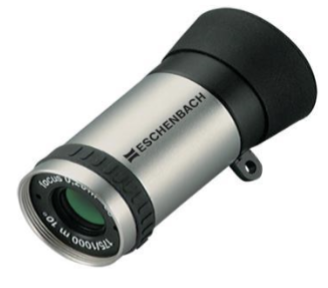 An optical system that uses two convex lenses. Image produced by Keplerian was real and inverted which required a prism to reverse the image. Therefore it is heavier, longer and costs more compared with Galilean. Keplerian provides a greater visual field and better optical quality than Galilean.
An optical system that uses two convex lenses. Image produced by Keplerian was real and inverted which required a prism to reverse the image. Therefore it is heavier, longer and costs more compared with Galilean. Keplerian provides a greater visual field and better optical quality than Galilean.
Galilean Telescope
An optical system that uses one convex lens which is closest to the object and one minus lens which is closest to the eye. Image produced by Galilean is real and upright. It is lighter, shorter, and cheaper than the Keplerian. Thus, is the first-choice prescription. It is suitable for people with peripheral field loss due to it providing a wider visual field.
Monocular or Binocular
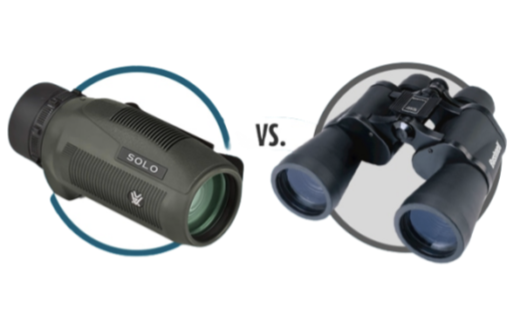 Monocular telescope is indicated when there is a significant difference in visual acuity between the 2 eyes. It is advisable to use in the better-seeing eye. It is more compact, lightweight, and cheaper. Drawback associated with the monocular telescope was eye fatigue and lesser field of view compared to the binocular telescope. Binocular telescope is indicated when there is similar visual acuity in both eyes, with the purpose of increasing the visual field, and for nystagmus. Binocular telescopes will be heavier and expensive.
Monocular telescope is indicated when there is a significant difference in visual acuity between the 2 eyes. It is advisable to use in the better-seeing eye. It is more compact, lightweight, and cheaper. Drawback associated with the monocular telescope was eye fatigue and lesser field of view compared to the binocular telescope. Binocular telescope is indicated when there is similar visual acuity in both eyes, with the purpose of increasing the visual field, and for nystagmus. Binocular telescopes will be heavier and expensive.
Hand-held telescope
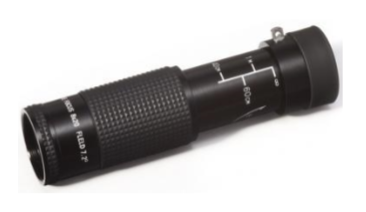 It is light, compact and cheaper than the Galilean and Keplerian. It is suitable for short activities and could be a first prescription choice.
It is light, compact and cheaper than the Galilean and Keplerian. It is suitable for short activities and could be a first prescription choice.
Spectacle-mounted telescope
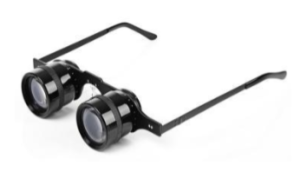 It is suitable for those who have hand-eye coordination problems and is very useful for prolonged activities or activities that require visualisation of details.
It is suitable for those who have hand-eye coordination problems and is very useful for prolonged activities or activities that require visualisation of details.
Clip-on
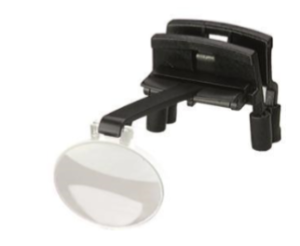 The clip-on model has both advantages. It is lighter than the spectacle-mounted model. However, the lenses can be scratched and the visual field can be reduced to further distances.
The clip-on model has both advantages. It is lighter than the spectacle-mounted model. However, the lenses can be scratched and the visual field can be reduced to further distances.




